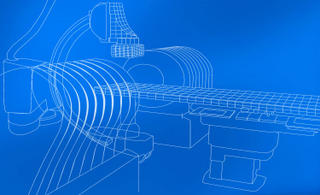CAFC Affirms TTAB in Two Nonprecedential Decisions
Sorry, but no TTABlog treats on this Eve of All Hallows. Just two non-tricky, nonprecedential decisions handed down last week by the CAFC. The first involved frequent TTAB litigant and Cubs fan Leo Stoller and his bungled attempt to oppose registration of the mark DARKSTAR for infrared night vision systems . The second concerned a PTO requirement that the Applicant disclaim the word STEREOTAXIS from its word-and-design mark (shown below) for various magnetic medical devices and related services.

In Stoller v. Northern Telepresence Corp., Appeal No. 05-1320 (October 28, 2005), the CAFC affirmed the TTAB's dismissal of Stoller's opposition, concluding that "substantial evidence supports the Board's finding that Mr. Stoller failed to file a timely request for extension of time in which to file his opposition." [The TTAB decision is discussed here at the TTABlog]. After calling for and reviewing the full TTAB record, the court agreed that each of Stoller's three attempts to file a request for extension of time was either defective or untimely.

In In re Stereotaxis, Inc., 77 USPQ2d 1087 (Fed. Cir. 2005), the CAFC upheld the Board's decision affirming the PTO's requirement that Applicant Stereotaxis, Inc. disclaim the word STEREOTAXIS in the mark shown immediately above.
The PTO relied on dictionary definitions and a press release from one of Applicant's investors to show that "stereotaxis" is a technique using scanners to create three-dimensional pictures, and that these definitions "describe several uses the Applicant ascribed to its products and services in its trademark registration application."
Stereotaxis argued that the Board "failed to consider dictionary definitions that are 'more reflective of the purchasing public's understanding of the term.'" The court, however, observed that "[t]o prevail in its claim, the Applicant must show that its proposed definition [requiring an external reference frame, a computer, and a scanning device] would be understood by the relevant public -- here the medical profession -- to be the only meaning of the term." Stereotaxis failed to make that showing.

As to the press release, Stereotaxis pointed out that it was neither made on its behalf nor was it contemporaneous with the trademark application. The Board, however, deemed the press release relevant because "it is evidence of the public's perception of the applicant's products and services."
The court therefore ruled that substantial evidence supported the Board's finding that "stereotaxis," as applied to Applicant's products and services, is merely descriptive.
Text Copyright John L. Welch 2005.




0 Comments:
Post a Comment
<< Home